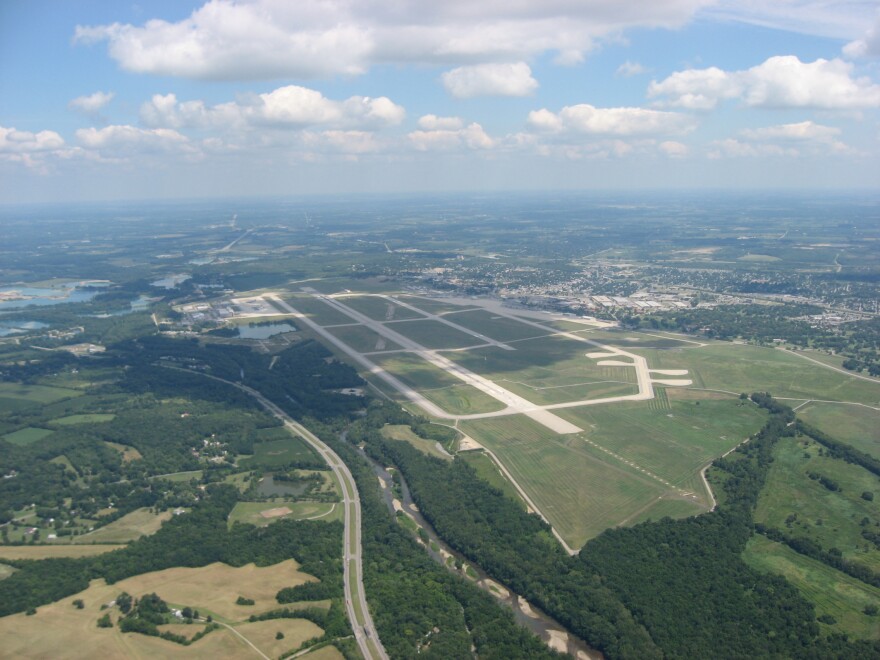Since it is required these days that everyone place themselves in some kind of generational category, let's get mine out of the way right away.
I am, without question, a Baby Boomer. Born on Dec. 6, 1952, the day that President-elect Eisenhower left to keep his campaign promise to go to the South Korean war zone and visit the troops. I am the son of a U.S. Army veteran of World War II.
Do the math and you will see that I was a youngster in grade school at the height of the Cold War, when tensions between the Soviet Union and the United States were incredibly volatile and the possibility of nuclear war loomed over the heads of all Americans.
Pilot Gary Powers, whose CIA U-2 spy plane was shot down over Soviet Air Space. The botched invasion of Cuba at the Bay of Pigs, two years after Fidel Castro took over. The Cuban missile crisis, 13 days in October 1962 when the U.S. and Soviet Union came to the brink of nuclear war.
These are subjects that seem to young people today like ancient history as they study them in school. At least, I hope they are studying them.
For me and millions of other Americans of my generation and older, these were very real events. We lived through them. Although there were times when we thought we might not.
I was just a kid, a student at Cleveland Elementary School in Dayton, Ohio, closing in on my 10th birthday during the 13 days of the Cuban missile crisis.
It was a frightening, disturbing time for most Americans, but in our obscure little grade school on the east side of Dayton and the neighborhood that surrounded it, there was reason for even more tension and anxiety – more than any nine-year-old kid should have to bear.
You see, Cleveland Elementary School was but a few miles from Wright-Patterson Air Force Base. My friend Mike and I walked out to Wright-Pat, as it was known to the locals, many times in hopes of talking our way inside the gates. Wright-Patterson was the home of Project Blue Book, the military's official investigation into whether UFOs were extraterrestrial.
We – along with nearly every kid at Cleveland Elementary – were convinced that one of the Roswell aliens captured in the alleged crash of a flying saucer near Roswell, New Mexico, was housed there. The official explanation was that it was a U.S. Army weather balloon.
Take your pick. We kids on Dayton's east side went with the flying saucer theory and believed the story going around that one of the aliens was alive and well and living in an airplane hangar at Wright-Pat. There was even a story that the Air Force had taught him to play golf and he had been seen on the base's course playing with top Air Force officers.
Well, needless to say, we never talked our way in.
Roswell alien or no Roswell alien, the kids of my grade school knew one thing for certain – that if a nuclear war broke out, the Wright-Patterson Air Force Base (in those days, anyway) was near the top of the list of Soviet targets.

In October 1962, after U.S. spy planes found photographic evidence of Soviet intercontinental ballistic missile sites in Cuba, barely 100 miles from American soil, the confrontation between the U.S. and the Soviet Union began in earnest.
I read the newspapers every morning and I watched Walter Cronkite deliver the news every night. I was one well-informed nine-year-old.
Our house was only about two blocks away from Cleveland Elementary School, and I remember walking to school each day during the Cuban missile crisis wondering if this would be our last day, wondering if we would all be vapor before the end of the day.
Tough thing for a nine-year-old to contemplate.
The kids at Cleveland Elementary School had been briefed many times on what to do in the case of nuclear attack. The old "duck-and-cover" defense that was taught to kids in the 1950s was a last resort, and probably not very effective.
What we were told was:
When the sirens sound warning of a nuclear attack, you will have approximately 20 minutes before the explosion. You are to follow your teacher, in an orderly fashion, to the basement of the school and be prepared to remain there for some time. Do not leave the building.
We presumed there were plenty of provisions in that basement, enough to last until we could leave. If there was anything left to leave to.
This kid wasn't buying it.
If I am going to be vaporized, I'm going to be vaporized in my own home, not in Cleveland Elementary School.
So, I concocted a plan of my own.
Our home was only two blocks away from the grade school. My sister, Barbara, is two-and-a-half years younger than me and her class was in the new wing of the school. I was going to bust loose and head for the new wing – I was prepared to do damage to any teacher or administrator who tried to stop me. I would race to my sister's class, grab her by the arm, and drag her out of the classroom if I had to.
Shut up and run!
From there, we would race down Pursell Avenue to our house at 1249, where my mom was. My dad was a health inspector who inspected dairy farms and spent most of his time out of the city; I just hoped and prayed he could get back in time; or be in some safe place.
Thank God, President Kennedy and his team were able to end the madness and I never had to put my plan into motion.
But if I had to, I would have done it.
Cold War kids learned to do what they had to do.




